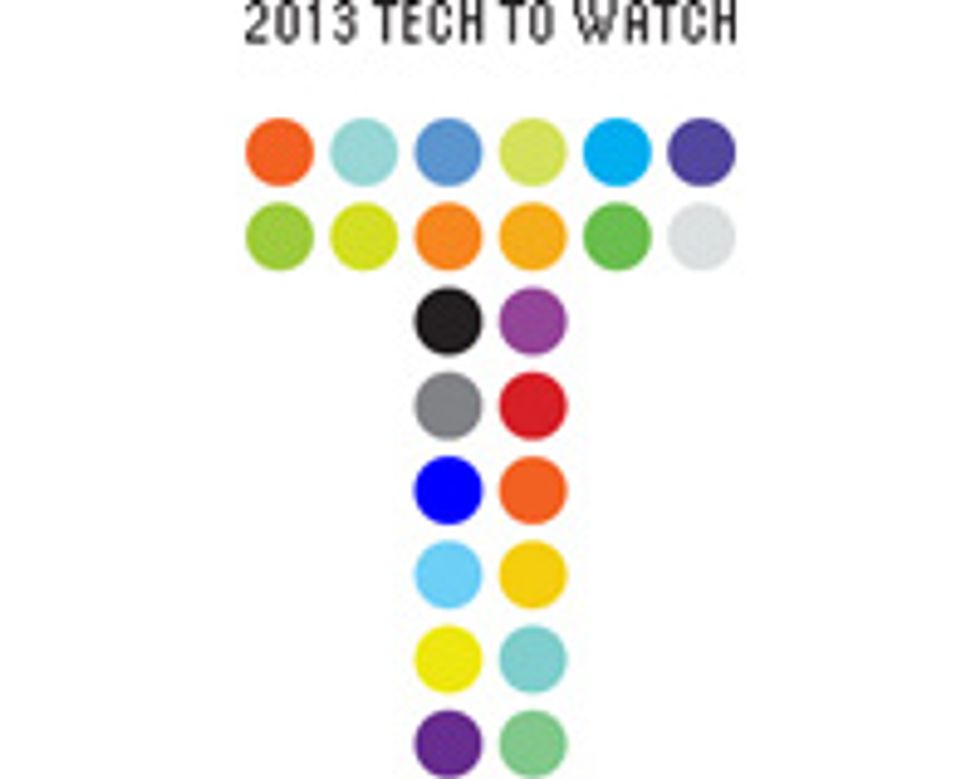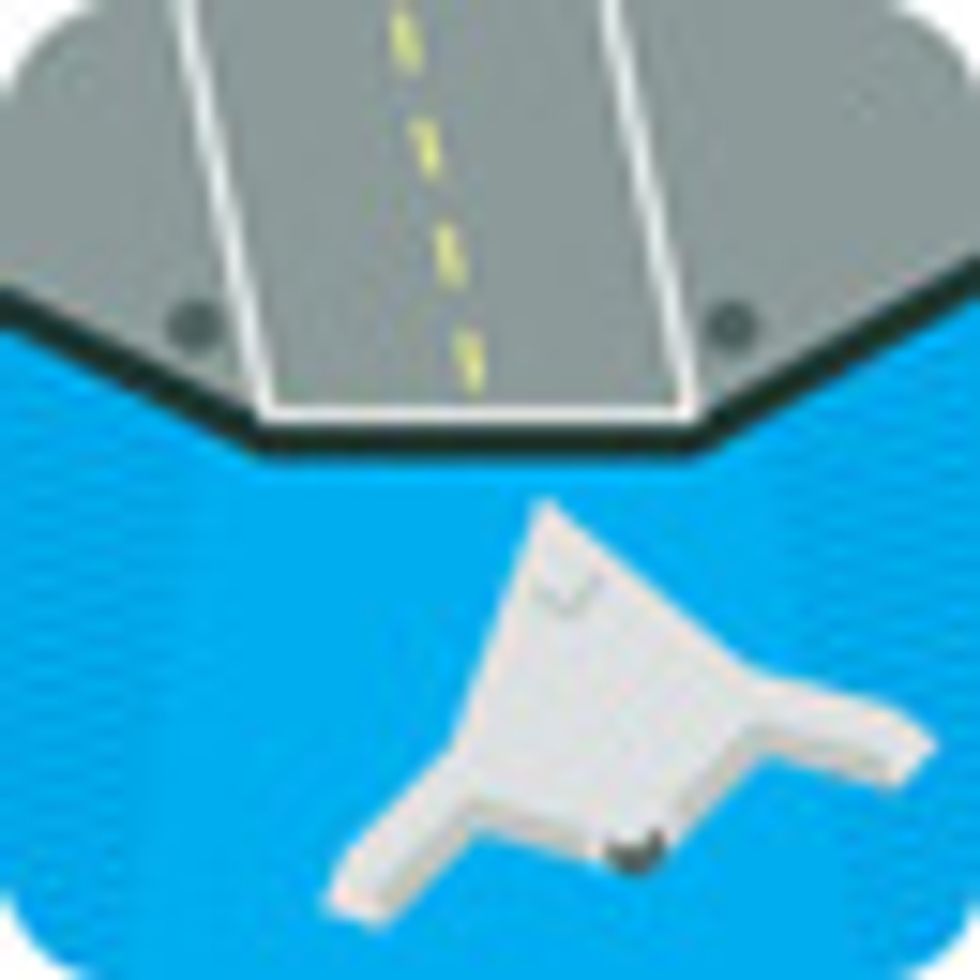Under the Radar: 7 Stories to Watch In 2013
Other technical advances worth keeping an eye on this year

Will Mice Still Suffice?
Or will we prefer Leap Motion’s hand-wavy device?
In the sci-fi thriller Minority Report, Tom Cruise showed off a glitzy gesture-based user interface, part of the 2054 future the movie depicted. Get ready for such interfaces to arrive en masse in 2013.
The biggest promises come from San Francisco–based Leap Motion, which will soon be offering a US $70 add-on the company claims can track movements of your hands and anything they’re holding with a resolution of just 10 micrometers. Leap Motion hasn’t described the technology. But if its über-Kinect performs anywhere near as well as claimed at such a low price, expect it to rival the mouse as a way of manipulating computers. —David Schneider
Darkness Illuminated
New detectors will hunt for the fingerprints of dark energy
About 5 billion years ago, the universe began to expand more and more quickly, driven by a mysterious “dark energy.” Space telescopes tailor-made to pin down dark energy’s identity aren’t likely to launch before 2019, but here on the ground the game is afoot. In 2013, the Dark Energy Survey will take full advantage of a custom-built, 570-megapixel camera now mounted on a 4-meter telescope at the Cerro Tololo Inter-American Observatory, in Chile. The scope will precisely measure cosmic expansion and help researchers to reconstruct the evolution of the universe’s large-scale structure. A complementary experiment will be installed at the Hobby-Eberly Telescope in West Texas later in the year. —Rachel Courtland
Fast-Action Flicks
Filmmakers double the frames per second
Movies have changed a lot since the silent era ended in the late 1920s, but one thing has remained the same: the frame rate. From The Jazz Singer to Avatar, movies have run at an effective rate of 24 frames per second. Now, at last, that rate is starting to change.
The upgrade is being pushed by directors Peter Jackson, whose The Hobbit series is being shot at 48 frames per second, and James Cameron, who has announced that his forthcoming Avatar sequels will be filmed at a high frame rate. The speedup sharpens the rendition, particularly of fast, horizontal motion in moving images, but it’s particularly useful in 3-D movies where such rendition often seems blurred or jerky.
Most digital projectors require only a software upgrade costing a few thousand dollars at most, according to Peter Ludé, senior vice president of Sony Solutions Engineering. “The big question is, will there be enough of a perceived benefit?” Ludé says. Three-dimensional and higher-resolution formats were a tough enough sell, he notes, and the improvement with a high frame rate is more subtle than with those other advances.—Glenn Zorpette
Talking Down to People
In-flight mobile phone service takes off
Soon you’ll finally get to use your phone while flying—and also listen to your neighbors yak their way from coast to coast. Last September, Boeing said it would start outfitting all new 747‑8 and 777 jets for mobile phone use by the end of 2013. The equipment, which fits in a single overhead compartment, provides a satellite link and a miniature cellular base station, or picocell. Several airlines are now working with telecoms to let passengers make calls and send text messages. Some, such as Virgin Atlantic, already offer the service on select flights for up to six passengers at a time; future systems will accommodate 30. Travelers can expect to pay international roaming rates to connect in the air. —Ariel Bleicher
The Toughest Landing
Unmanned planes will touch down on aircraft carriers
A pilot faces no greater challenge than landing on a moving aircraft carrier. The second-hardest may be taking off from one. This year, both operations—and everything in between—will be done by the X-47B, a pilotless plane built by Northrop Grumman for the U.S. Navy. The plane blends GPS navigation with optical and other sensors to pinpoint its position and avoid collisions; it comes under human control only when taxiing on the carrier’s deck. The goal is for it to get in line, take off, land, and get off the deck in no more time than manned planes require. In 2014, the X-47B will take on aerial refueling—all by itself. —Philip E. Ross
Greening Canada’s Tar Sands
An Alberta start-up says it has a cleaner way to extract oil
By this May, a US $60 million field test should be pumping bitumen out of Alberta’s tar sands while using virtually no water and 85 percent less natural gas per barrel than today’s methods. Rather than injecting steam to melt buried bitumen so it can be sucked hundreds of meters up to the surface—the energy-intensive process used to extract close to 1 million barrels per day of Canadian bitumen—Calgary-based N-Solv Corp. will dissolve the sticky stuff with recyclable butane and similar chemicals. Success would shrink bitumen’s carbon footprint and blunt the opposition to expanded exploitation of this fossilized fuel. However, it might slow the shift to petroleum-free transport alternatives, such as electric vehicles. —Peter Fairley
Ouya Opens Up Game Design
Its Android-based console lets anyone be a game developer
While mobile games may be all the rage, one start-up is betting that gamers miss the lush experience of playing on a big-screen TV. But Ouya, the sleek new gaming console shipping early this year, is hardly a retro throwback—in fact, it may be revolutionary. Its Android-based software is open source, which means anyone can develop games for the system. The company will use an app-store model, and it insists that any game developed for Ouya must have a free-to-play version.
Ouya generated deafening buzz in 2012 with a Kickstarter campaign that raised almost US $8.6 million. Still, a few big questions remain: Can it meet its deadlines? And will the open-source games grab gamers’ interest? —Eliza Strickland
A Boatload of Entre-preneurs
Unreasonable at Sea launches start-ups—literally
Reasonable people launch start-up accelerators—one-stop shops to find, fund, and foster entrepreneurship. But only an unreasonable person would launch one on a ship. Daniel Epstein, founder of the Unreasonable Institute, in Boulder, Colo., will embark this month from San Diego on a 100‑day voyage that will visit 14 countries on a ship provided by the study-abroad program Semester at Sea. In return for the chance of accompanying him, 27 entrepreneurs have given him equity stakes in their start-ups, which build affordable medical products, fuel-efficient stoves, programmable hearing aids, drone sailboats that clean oceans, and other socially conscious products. Also on board for the Unreasonable at Sea cruise are mentors of all sorts. Epstein plans to cover his costs by bringing in folks who want to rub shoulders with the entrepreneurs and mentors. If that doesn’t work, he’ll have to find the funds later; he’s already put a lot of expenses on his credit card. “My mom wasn’t too excited about that,” he says. —Tekla S. Perry
Auto Giants Bet Big on Mini EVs
GM and Toyota enter the market for battery-powered urban vehicles
Should nuclear-tinged tensions with Iran and resurgent economic growth in China blow gasoline prices sky-high again, the top two automakers will be ready with pint-size electric city cars. They thus follow the lead of Renault’s Twizy, starting at €6990 (US $9000), an open-cab two-seater that was vying for the top spot in European electric-car sales last year. General Motors is promising to test its EN-V 2.0 prototype runabout throughout China, while Toyota will offer Japanese urbanites a two-rider version of its Coms electric minicar this year. Japan recently deemed ultracompacts to be street legal—a prerequisite to bringing these tiny electrics to North America. —Peter Fairley









